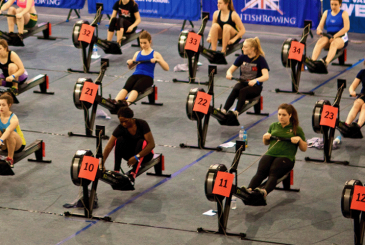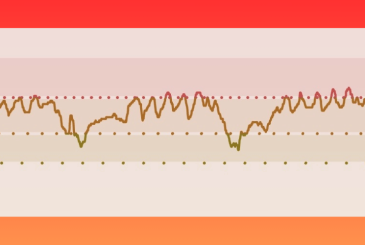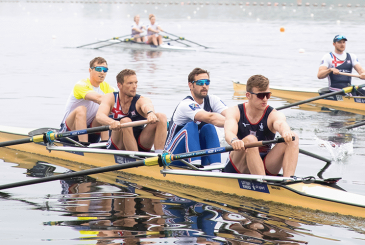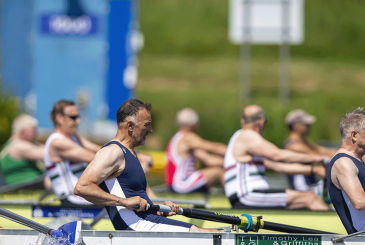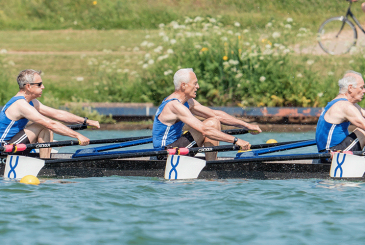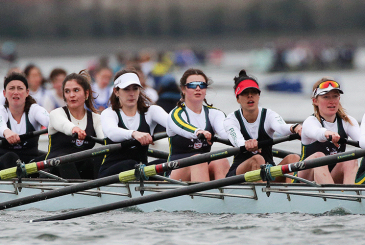Exercise physiologist Mark Homer explains the warm up process, how it should vary depending on what you are preparing for, and some practical advice tailored for rowing.
Warm-ups; everybody does them and everybody knows they are important – to “get the blood flowing”, “get in the zone”, “loosen the joints”, and “stop myself getting injured”. None of that’s wrong, but there’s more to WHY we warm up. Similarly, many rowers and coaches aren’t clear what components they need to include to make their warm up effective.
The three components of an effective rowing warm up
There should be three main components to an effective warm up according to an article by experienced strength and conditioning coach Ian Jeffries:
- Raise your heart rate, blood flow, breathing frequency and body temperature
- Activate and mobilise key muscle groups
- Potentiate: enhance performance in the activity for which you’re warming up.
This simple breakdown is a useful way to approach your rowing warm up as it covers the main reasons why we should dedicate time to preparing for a training session or race.
If it helps you to be clear about what you’re trying to achieve when warming up, the acronym RAMP is a good reminder (Raise, Activate, Mobilise, Potentiate).
1. Raise
Any form of low-intensity cardiovascular work will raise heart rate (and therefore blood flow), breathing frequency, and body temperature.
The aerobic system is rather like a diesel engine in that it requires time to get up to speed. While we wait for increases in oxygen delivery to the active muscles, the shortfall in supply must be met by alternative sources. Completing low-intensity cardio-vascular exercise before a training session or race ‘switches on’ the aerobic system in advance, saving precious alternative sources of energy for when they may be needed more – particularly during racing.
How you do this is up to you. Some will jump on the ergo, or even do their warm up in the boat before the session proper starts. Alternatively, you can add variety by integrate some different modes of exercise into your programme. Static cycling or even running (not everyone’s best friend) are good alternatives and also provide opportunities to build crew cohesion as a certain amount of conversation is possible while you’re doing them.
2. Activate and mobilise
Activation and mobilisation are crucial elements of warming up, particularly in rowing where sequencing and range of movement are essential for effective performance. Stimulating specific muscle groups to rouse them for efficient use can have a large effect on the technical delivery of the stroke as well as power production during it.
Sports scientists have given significant attention to the mobilisation element of warm ups in recent years. Today’s approach is to warm up with dynamic exercises that replicate the movement patterns delivered on the ergo or in the boat. Such warm ups should engage muscles through their full range of motion.
Example warmups for activation and mobilisation
The video below incorporates activation and mobilisation exercises into a time-efficient format, ideal when you are waiting for a machine to become free in a busy gym. Note how this will also raise heart rate at the same time if done in a dynamic fashion.
For a more specific and technical warm-up, the following video runs through a progressive set of activation exercises that will prepare you for your session or race.
As mentioned earlier, a typical reason for warming up is the prevention of injury, and few would doubt that this is the case. However, the hard evidence to support this notion is thin on the ground. This is, in part, due to the challenges of measuring the preventative effects of a warm up and the number of other variables that could cause injury. Potentially the best way to describe warm ups is to say that they are a means of improving subsequent performance rather than reducing the risks associated with it.
Activation and mobilisation for masters rowers
The older we get, the longer this process can take, with it taking more effort to activate and mobilise the required muscles due to degradation in the nervous system. This means more time should be put aside for this section of the warm-up in particular.
3. Potentiate
This leads nicely to our third component – a series of activities that have the potential to enhance upcoming performance. Such methods can impact different elements of performance, depending on how you do them. For example, the use of high force explosive exercises such as plyometric jumps, which replicate the outputs required during the upcoming performance, can ‘prime’ the system for immediate maximal effort. Such exercises achieve this by preparing the nervous system to send messages quickly and recruit extra muscle fibres that contribute to boat speed. The video below shows some simple plyometric exercises.
How to enhance your cardiorespiratory potential
Other techniques to optimise preparation for racing focus on the cardiorespiratory system and our ability to deliver oxygen to the muscles for energy production. For example, you can do short (e.g. one minute) ‘bursts’ at race pace to ‘fire up’ the oxygen consumption furnace in preparation for placing demand on it during a race. In rowing races that are relatively short in duration, we don’t want to spend the first 500m throwing coal on the fire (to continue the engine analogy); instead, we want to make good use of the abundant energy that can be provided this way quickly.
The bonus is that you save other methods of producing power, which you can then put to good use during a mid-race push or sprint finish. The optimal time to do this is 20 minutes before the race starts. This gives you time to recover before needing to deliver power ‘for real’.
Mental warm up
Finally, a warm up is also a means of mentally preparing for the session ahead. This doesn’t just apply to racing. Aside from the classic trope of ‘getting in the zone’, warming up with your crew will enhance mental readiness and aid team cohesion. Again, it’s hard to measure the benefits of this, but you should not be underestimate them.
Static stretching and warm ups
In the past, rowing warm ups on land often involved static stretching. Static stretching helps to increase flexibility as well as mobility, both of which are important in rowing. In particular, most rowers will benefit from developing a better range of movement round their hips. But static stretching is not the same thing as warming up; it doesn’t raise, activate or potentiate.
Static stretching for flexibility and mobility should be done as a separate session. You should also warm up before doing a static stretching session.
Summary
In summary, the components of an effective warm-up are simple and easy to implement. Develop a routine that that you’re confident will enhance the upcoming session and help to ensure it goes without incident. Use this consistently, so it becomes second nature; As well as being efficient because you and your crew know what to do, this means there are no surprises on race day.
Photo: Bertie Shoots.




